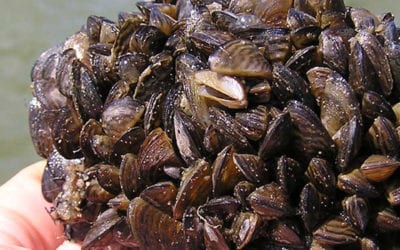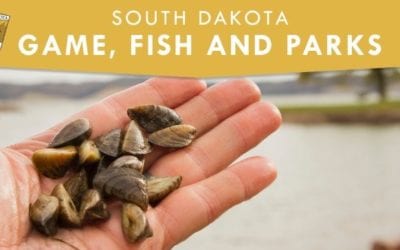 We have been sending emails to you all summer, trying to keep you informed of the laws and what South Dakota Game, Fish and Parks is doing to try and slow the spread of aquatic invasive species (AIS) in our great state.
We have been sending emails to you all summer, trying to keep you informed of the laws and what South Dakota Game, Fish and Parks is doing to try and slow the spread of aquatic invasive species (AIS) in our great state.
We thought with the dog days of summer upon us, we would lighten the mood a little with a few interesting facts about AIS.
1. Asian carp were brought to the U.S. in the mid-1970’s to help clean commercial catfish rearing ponds, but did you know that in terms of aquaculture (producing fish for food),these carp are the fourth most produced fish in the world? They are a valued fish for eating and are extinct due to overfishing in much of their home range. Here is a video showing how to clean and prepare silver carp.
2. Asian carp are vocacious eaters of plankton and can eat 20%- 40% of their body weight in the micro-organism every day!
3. Although they prefer lakes, they require large rivers for spawning. The eggs are semi-buoyant and it is believed they must remain suspended in the water column to survive.
4. Silver carp can jump up to 10 feet in the air when startled by a boat motor or other loud noise.
5. Zebra mussels were transported to North America in the ballast water of transoceanic ships.
6. Zebra and quagga mussels are the only freshwater mollusks in North America that can firmly attach themselves to solid objects.
7. A close relative, the quagga mussel, got its name from an extinct relative of the zebra.
8. Female zebra mussels can lay over 1 million eggs in a spawning season.
9. Zebra and quagga mussels were first discovered in Lake Saint Claire sometime around 1988.
10. Zebra and quagga mussels have a few North American predators. Redear sunfish, freshwater drum, small mouth bass and bluebill ducks are a few critters that will eat these mussels.
Stay educated, stay informed and help current and future generations slow the spread.You can also visit sdleastwanted.com at any time to learn more about what you can do!
GFP Mission: The South Dakota Game, Fish and Parks provides sustainable outdoor





0 Comments